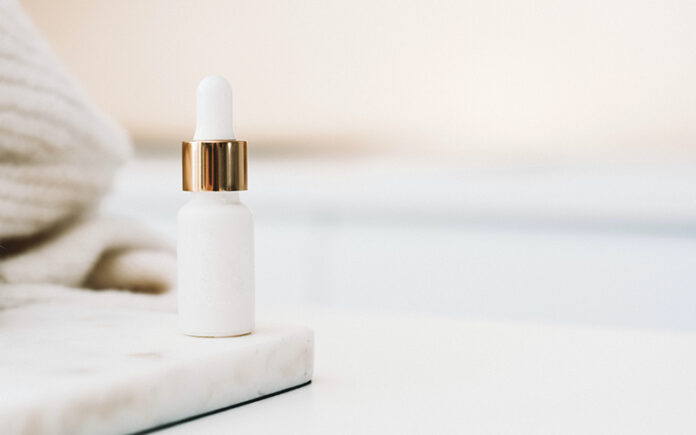
Skincare has become the new obsession for women everywhere. Everyone wants their skin flawless, radiant, and glowing. When it comes to skincare, consumers want results without spending too much money. They also want to save time and effort. That’s why they turn to high-quality cosmetics and skincare brands that offer effective solutions.
Every day, millions of people around the world explore their beauty options through social media platforms. The question then arises – why don’t they start their brands? What stops them from taking action? Most often, it comes down to fear of failure. People often get afraid of being judged by their followers. If you have ever wondered why some people go to great lengths to hide their real selves behind carefully curated images, you now know the reason. They are afraid of judgment from strangers. And you can relate because no two moments in life are exactly alike. For everyone out there who wants to take the plunge into creating their skincare brand, here is a simple guide.
Step 1 – Identify your audience and their skincare concerns
What makes someone use skincare? There are many factors, including cost, lifestyle choices, and comfort level. Knowing who you’re targeting can help shape your product line and how you market it. When developing your brand identity, think about what concerns people have regarding products they want to purchase. What do they need to know before making a purchasing decision? If your target audience consists of women ages 25-35, then you might develop a product line focused on preventing breakouts while managing dryness and fine lines.

Step 2 – Research your product
To create a successful brand, you first need to determine exactly what you want to accomplish. What does your brand promise? Who is your customer? To start, ask yourself what type of products you wish to sell. Do you intend to make moisturizing lotions, cleansers, serums, creams, etc.? Once you’ve determined what kind of products you’d like to offer, research potential ingredients and formulations. There’s no point in starting with a good idea if you don’t know what you’re working toward. By conducting some preliminary research, you’ll gain valuable insight into the best ways to formulate your products. You may discover that certain ingredients work well together, or you may find that certain formulations suit your goals for specific customers.
Look at ingredient lists to identify those that already exist in nature. Then search online for manufacturers that produce these ingredients and look for brands that carry them. If your private label skincare brand needs help in the development of beauty product formulas, manufacturing, packaging or shipping, we recommend that you visit this site immediately. This team is at your disposal and can help you make all your dreams come true, and finally have the beauty line you’ve always dreamed of.
Step 3 – Make decisions and get feedback
Once you’ve decided on your formula and target demographic, it’s time to test your ideas in real-world scenarios. Find out what works and what doesn’t. Talk to friends, family members, and coworkers to learn their opinions. Even though you may not always hear perfect feedback right away, keep trying. Sometimes taking risks and failing forward can lead to success later down the road. Try new formulas based on your findings. Don’t just blindly follow recipes, try mixing things up until you get something you like. Also consider testing new packaging designs, colors, slogans, logos, etc., for your products.

Step 4 – Set up a website and social media accounts
Creating a web presence is highly recommended, particularly if you plan to sell your product online. Consumers tend to trust online reviews over the word of mouth recommendations. Additionally, having an active presence on social networking platforms will give your business an advantage over competitors who don’t invest much time and effort into building their networks. Most importantly, your site should let users browse your product line without requiring registration. Remember to design your page to fit your brand image. As mentioned earlier, beauty companies tend to have unique requirements such as long shelf lives and low pH values. Be sure to list all of your ingredients and specify which ones meet safety standards. Make sure your contact information is clear and easily accessible. Include links where possible, and consider providing live chat support via Facebook Messenger.
Step 5 – Start selling
Now that you have a viable product ready to launch, you need to decide whether you’ll sell directly to consumers or go through retailers. Whichever route you choose, you’ll likely begin by setting up a storefront and listing items for sale. Establishing shipping locations will increase sales due to convenience. Consider partnering with local businesses to make deliveries easier. In addition, you could establish a retail location in malls, airports, grocery stores, or even gas stations. Having physical outlets increases visibility and gives you more control over inventory.

Step 6 – Promote your products using digital marketing
Although you’ll still benefit from traditional advertising methods, the Internet has become the primary platform for reaching your target audiences. Digital marketing includes everything from SEO (search engine optimization) to email campaigns. SEO relies heavily on keywords and involves optimizing websites so they appear higher in search results. Email marketing uses emails to promote your products and services. Each method offers its advantages and disadvantages. For example, SEO takes longer to see positive returns, whereas email marketing generates immediate results. But if you tailor each campaign to your individual goals, you can reach many of your audience members every day.
Step 7 – Earn money!
Finally, once you’ve perfected your branding and have set up all of your tools, you need to figure out how to earn money. How will you finance your company? Will you charge a fee upfront or take a cut when clients buy your products? Or maybe you’ll give discounts to loyal customers. Whatever your strategy, make sure it aligns with your brand message. A service-based company won’t necessarily appeal to cosmetic shoppers. On the flip side, if you’re planning to sell exclusively organic products, it probably wouldn’t make sense to include fees for shipping or handling. Think about how you can add value to your customers and turn your business into a profitable venture.

Now that you have a general idea of what it takes to build a successful skincare brand, you should feel confident enough to get going and create your own. Good luck with your venture!







